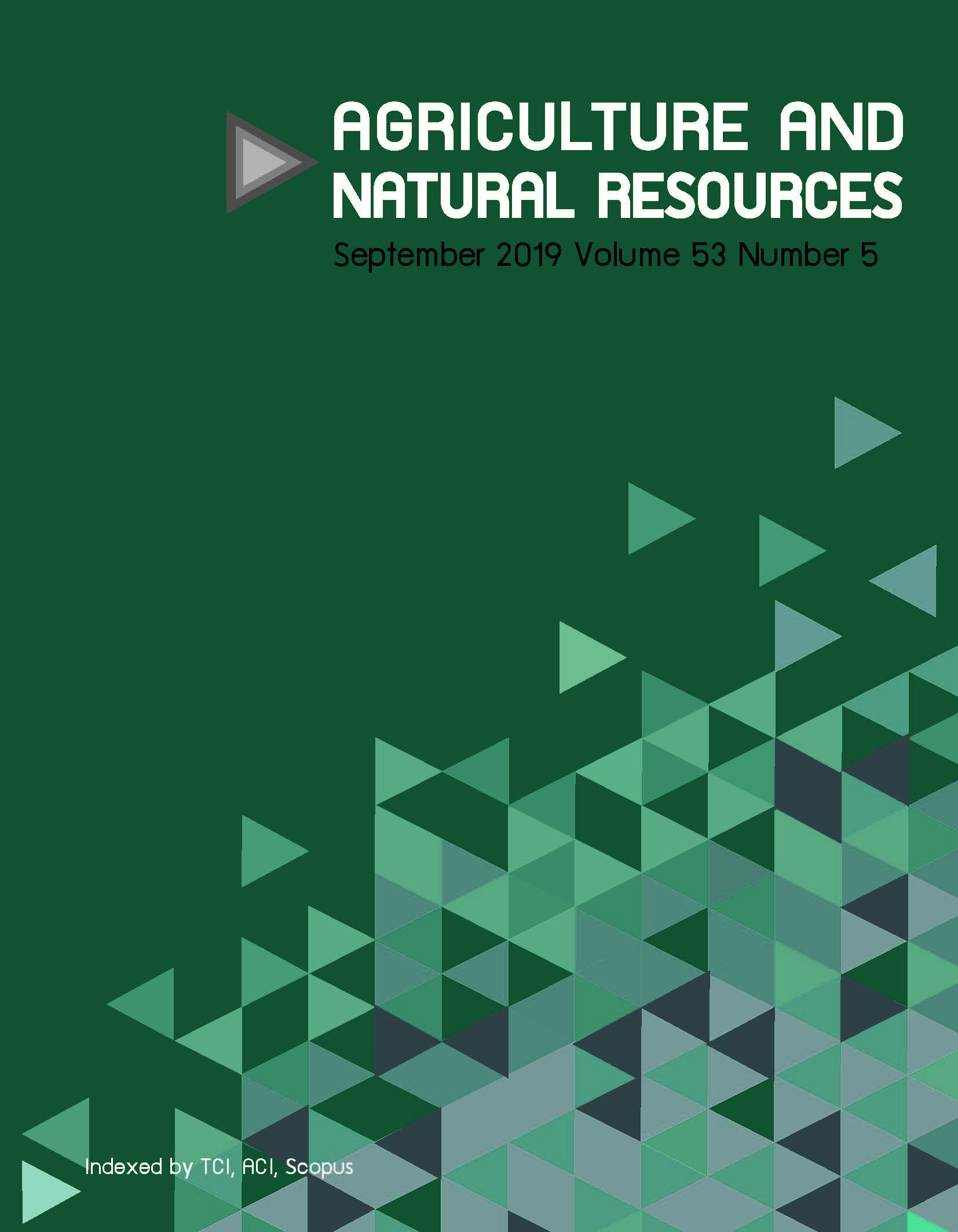Effect of Thai hoary basil (Ocimumcanum Sims.) seed mucilage on fat reduction and quality characteristics of chicken salt soluble protein gel and low-fat meat products
Keywords:
Chicken salt soluble protein gel, Fat replacer, Low fat meat products, Thai hoary basil seed mucilageAbstract
Mucilage from Thai hoary basil seed (HBM) from solvent extraction was investigated (ratio of seed to water, soaking temperature, soaking time) to determine the optimal conditions for using as fat replacer in Chinese sausage and frankfurter sausage. The optimal extraction conditions were a ratio of seed to water of 1:30 and soaking at 40°C for 30 min. A gel model of HBM, pork back fat (BF) and chicken salt soluble protein gel (SSPC) was developed at 2.0% and 2.5% NaCl, which improved the water holding capacity (WHC), textural parameters and gel strength of the SSPC. The gel model with 40% fat reduction containing 8.11% HBM, 12.16% BF, 79.73% SSPC and 2.5% NaCl had the highest storage modulus under frequency period (0.1–100 rad/s), indicating the strongest gel structure, and had the highest WHC (71.85%) and similar textural properties to the model with BF alone. This model produced Chinese sausage with increased hardness, gumminess and chewiness; however, the color, water activity, microbial count and sensory scores were not significantly different from the control. On the other hand, this gel model significantly reduced the hardness, gumminess, chewiness and WHC of frankfurter, which resulted in increased cooking loss. The color, microbial count and sensory scores were not significantly different from the control. The final products were acceptable with liking scores of 6.0–6.6. The quality changes were not detected by consumers due to the synergistic texture contribution of HBM and BF being comparable to some tested commercial products (20% fat).
Downloads
Published
How to Cite
Issue
Section
License

This work is licensed under a Creative Commons Attribution-NonCommercial-NoDerivatives 4.0 International License.
online 2452-316X print 2468-1458/Copyright © 2022. This is an open access article under the CC BY-NC-ND license (http://creativecommons.org/licenses/by-nc-nd/4.0/),
production and hosting by Kasetsart University of Research and Development Institute on behalf of Kasetsart University.







